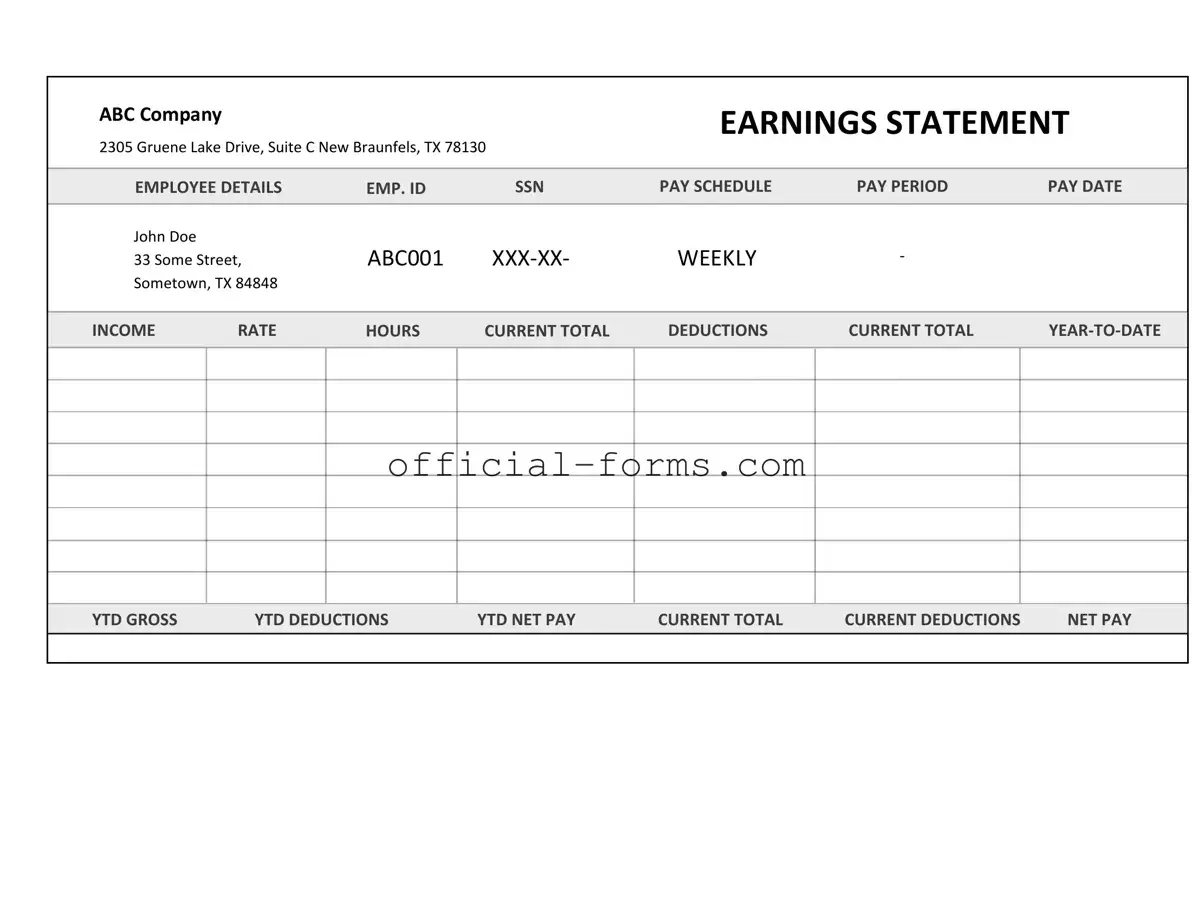Filling out the Independent Contractor Pay Stub form can seem straightforward, yet many individuals make common mistakes that can lead to complications down the line. One frequent error is the omission of essential personal information. Contractors often forget to include their full name, address, and taxpayer identification number. This information is critical for accurate record-keeping and tax reporting.
Another mistake involves incorrect calculations of earnings. Contractors sometimes miscalculate their hours worked or their hourly rate, leading to discrepancies in the final payment amount. It is essential to double-check these figures to ensure that the pay stub reflects the true compensation owed for services rendered.
Additionally, failing to account for deductions is a common pitfall. Independent contractors may overlook necessary deductions, such as taxes or retirement contributions. These deductions can significantly affect the net pay, and inaccuracies can create issues with tax obligations later.
Some individuals neglect to specify the payment period. Each pay stub should clearly indicate the start and end dates of the payment period. Without this information, clients or contractors may face confusion regarding when services were provided and when payments are due.
Another frequent error is using vague descriptions for services rendered. A pay stub should include clear and specific details about the work completed. Vague descriptions can lead to misunderstandings and disputes over payment amounts or the nature of the work.
Contractors sometimes fail to sign or date the pay stub. While it may seem like a minor detail, a signature can add a layer of authenticity and formality to the document. A dated pay stub also helps track the timeline of payments, which can be useful for both parties.
Moreover, some individuals do not keep copies of their pay stubs. Retaining a record of each pay stub is crucial for personal financial management and tax preparation. Without these records, contractors may struggle to substantiate their income during tax season or in the event of an audit.
Lastly, neglecting to communicate with clients about the pay stub can lead to misunderstandings. Contractors should ensure that their clients are aware of the pay stub's format and the information it contains. Open communication fosters transparency and helps avoid disputes regarding payments.
